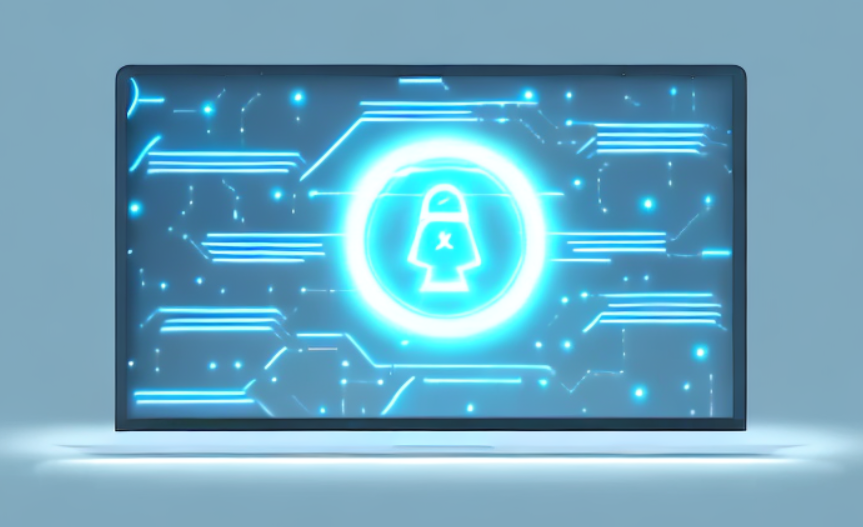Top 5 Cyber Security Trends 2023
20 Jul, 20236 min
Cyber security has become a critical buzzword for businesses of all sizes, with an attack occurring on average at a rate of one every 39 seconds. The future of cyber security will inevitably involve challenges to the constantly evolving global landscape, meaning organisations need to be prepared for new and emerging threats and adapt their strategies to stay ahead of the competition. But what is the future of cyber security, and what cyber security trends are expected in 2023?
To help show what to expect from the future of cyber security, we’ve produced this article to explore the top 5 cyber security predictions and trends in 2023.
1. Increased need for cloud security
More and more companies, from global giants to innovative start-ups, are turning to cloud management software services to support their operations. However, despite its popularity and benefits as a cost-effective and flexible way to scale, most cloud solutions surprisingly still don’t provide adequate security features. From authentication, auditing, encryption and handling data and analytics, cybercriminals can still bypass organisations’ internal policies when it comes to cloud security.
Organisations that have adopted cloud software in recent years have been investing in strategies and functions to combat these potential threats, and this investment will continue to thrive in 2023 and beyond.
To add to this, Statista has reported that cloud security is the fastest-growing segment within the IT security space, with an estimated growth of around 27% from 2022 to 2023. The wake of the pandemic has influenced this increased need for cloud security as more businesses have adopted cloud computing software whilst ensuring they put in place ways to mitigate threats that could impact their organisation and their users.
An increased need for cloud security has been emphasised by findings from Globe Newswire, which predicts the cloud security market, valued at $20.54 billion in 2022, will exceed $148.3 billion by 2032 - a compound annual growth rate (CAGR) of 25% from 2023 to 2032.
2. Rise of Artificial Intelligence and Machine Learning
Artificial Intelligence and Machine Learning (AI and ML) will be one of the most significant cyber security trends in 2023. AI and ML technology has played a massive part in the future of cyber security in recent years. From developing automated threat detection and security systems to identifying malware and scanning for potential attacks and suspicious activity, AI and ML are minimising human error issues and are ever-evolving to becoming viable solutions to combatting cybercrime.
AI and ML programmes are boosting their ability to analyse big data to forecast anomalies and patterns with cyber threats. In 2023, more organisations will start and continue to use AI and ML to identify attacks and develop strategies to combat them and reduce the risks of data breaches. Additionally, the rise of AI and ML will increase automation surrounding cyber security, meaning organisations can free up their talent and lend their expertise to more complex and hands-on issues.
Of course, the rise of AI and ML technologies to combat cybercrime will be met with a rise of AI and ML technology models used to illicit attacks, including an increase in ransomware and phishing.
Therefore the future of cyber security will mean organisations must stay two steps ahead of attackers when utilising AI and ML as a cyber security defence mechanism. Essentially, AI and ML must be tuned with rich data to create effective algorithms to spot potential threats from any and every scenario possible to help prevent and reduce the risk of similar and future attacks from occurring.
Evidence suggests businesses are well on their way to ensuring they stay ahead of attackers, with cyber security predictions relating to AI alone estimating an increased market size at a CAGR of 19.43% between 2023 and 2032. This estimation would take the global AI market in cyber security to hit $102 billion by 2032.
3. IoT and a risk of cybercrime susceptibility
The Internet of Things (IoT) consists of a network of physical devices, from home appliances, vehicles, tech with sensor installation and other software. These IoT devices are all connected to the internet and are commonly used to transmit and gather data. Globally, there are around 15 billion connected IoT devices, a number set to rise to 50 billion by 2030. However, with a rise in IoT devices inevitably comes an increase in their susceptibility to cyber-attacks.
Despite growing popularity, similarly to cloud software systems, devices connected to IoT products are somewhat behind the times in terms of security compared to traditional computer devices and are vulnerable to attacks. These cyber attacks consist of hackers manipulating IoT to take control and hijack physical devices like phones and vehicles, stealing data, and implementing denial-of-service attacks - causing catastrophic issues for users and businesses alike.
With cyber security issues plaguing the IoT space, causing problems in both the virtual and physical world, increased research and development to help tackle these issues will occur in 2023 and thereafter. With this, the market size of IoT cyber security is expected to grow from $5 billion recorded in 2022 to $6 billion in 2023, eventually forecasted to reach $20 billion by 2027 - a CAGR of just over 31%.
4. The growing threat of ransomware attacks
Ransomware attacks are becoming increasingly common and are detrimental to global businesses and the economy. Statista reported that 493.3 million ransomware attacks happened in 2022 alone.
A ransomware attack is a type of cyberattack that encrypts a victim's data and demands a ransom payment to decrypt it. Ransomware attacks can disrupt operations, damage reputations, and lead to financial losses. For perspective, a report by Cybersecurity Ventures revealed that globally $20 billion was lost in 2021 due to ransomware attacks, which is expected to increase to $265 billion by 2031.
One significant reason ransomware attacks are on the rise is that ransomware criminals are becoming more sophisticated. For example, ransomware criminals often use phishing emails to trick victims into opening malicious attachments, and they are also using ransomware-as-a-service (RaaS) platforms to make it easier to launch attacks.
RaaS platforms are a type of malware that provides everything a criminal needs to launch a ransomware attack, including the ransomware itself, a payment processor, and a customer support system. This makes it easy for even unskilled criminals to launch ransomware attacks, driving the growth of these attacks.
Ransomware criminals are no longer just targeting large national infrastructure organisations. They now target a wider range of companies, including small and mid-size businesses, so it's imperative to have a strategy in place to respond to them, regardless of the size of your business.
Organisations of all shapes and sizes should implement strong security controls, such as firewalls, intrusion detection systems, and data encryption, to prepare themselves for potential threats. Additionally, educating employees about ransomware attacks and how to spot phishing emails is another good step to minimise the risk of attacks.
5. Demand for skilled cybersecurity talent
The demand for cyber security talent is at an all-time high. In 2023, it is estimated that there will be a shortage of 3.5 million cyber security professionals worldwide. This shortage is being driven by several factors, including the increasing rise of cyber attacks, the growing use of cloud computing, and the rising number of people working remotely.
Cyber security professionals are highly sought-after across various industries, including healthcare, finance, government, and technology. They protect organisations from a broad range of cyber threats, including ransomware attacks, data breaches, and phishing scams.
For businesses, the demand for cyber security talent is even more acute. Companies increasingly rely on technology in today's digital age, making them more vulnerable to cyber-attacks. One data breach can cost a business millions of dollars in lost revenue and damage its reputation.
Businesses must hire qualified cyber security professionals to protect themselves from cyber-attacks. These professionals can help companies to identify and mitigate cyber threats, develop and implement security policies and procedures, and train employees on best practices.
So, if you're a business owner, it's essential to start thinking about your cyber security needs now. The sooner you begin planning, the better prepared you will be to defend your business from cyber-attacks.
Of course, we appreciate that sourcing highly skilled professionals within this niche is far from easy when the market for sought-after cyber security talent is so competitive. But thankfully, we're here to help.
The top 5 cyber security trends of 2023 discussed in this blog reflect the ever-changing threat landscape. As technology continues to evolve, so do the methods cybercriminals use to exploit vulnerabilities.
Organisations need to invest in a comprehensive cyber security strategy that includes a mix of preventive, detective, and corrective measures to stay ahead of the curve. A significant part of this strategy should focus on recruiting, which is something we can help you with.
Get in touch with a cyber security recruiter today!
Now you know the top 5 cyber security trends for 2023, it’s time to start thinking about your recruitment strategy and how you’ll keep up to date with the ever-evolving world of cyber security. Whether you’re looking for the top talent to grow your business or cyber security jobs to elevate your career, we are here to help.
Get in touch with our cyber security recruitment team to discover how we can best support you today.



